As mortgage rates rise, serious homebuyers are scarce. But plenty of people are searching for homes online and touring them, waiting until rates decline to buy.
The median U.S. home-sale price was $348,000 during the four weeks ending February 19, essentially unchanged (+0.1%) year over year. That’s the first time since at least 2015, when the data for this report begins, the typical home isn’t selling for more than it would have a year earlier.
Prices are very close to falling on a year-over-year basis because serious homebuyers are scarce as mortgage rates approach the high-6% range. Mortgage-purchase applications dropped to their lowest level since 1995 last week as stubbornly high inflation caused rates to jump for the second week in a row, pricing many would-be buyers out of the market.
The typical monthly mortgage payment nationwide is $2,486 with today’s average rate, just $20 shy of October’s record high and up 26% year over year. Put another way, a homebuyer with a $2,500 monthly budget can afford a $384,000 home, compared with the $518,000 home that same buyer could have purchased with the 3% rates common in 2021. That leaves sellers with just one option to lure buyers: Lower their asking price.
Early indicators of homebuying demand show that there are plenty of people searching for homes, with online searches of homes for sale and home tours up notably from the end of last year. But those home searchers are holding off on the more serious steps of applying for a mortgage and making offers.
“Affordability is weighing heavily on would-be buyers, with the uptick in mortgage rates and still-high prices giving them pause,” said Redfin Deputy Chief Economist Taylor Marr. “More people will take the plunge and buy the homes they’re looking at online and in person when housing costs come down enough to fit their budget. But we don’t know when that will happen; where mortgage rates go from here depends largely on inflation. When inflation does slow down enough to bring rates back down, there’s a pool of sidelined buyers who will be waiting to jump back in. Those buyers will still be limited by a lack of homes for sale, though–new listings are down by double digits.”
Leading indicators of homebuying activity:
- For the week ending February 23, average 30-year fixed mortgage rates rose to 6.5%, marking the third straight week of increases. The daily average was 6.88% on February 22.
- Mortgage-purchase applications during the week ending February 17 declined 18% from a week earlier, seasonally adjusted, reaching their lowest level since 1995. Purchase applications were down 41% from a year earlier.
- The seasonally adjusted Redfin Homebuyer Demand Index–a measure of requests for home tours and other homebuying services from Redfin agents–was up 2% from a week earlier and 9% from a month earlier during the week ending February 19. It was down 25% from a year earlier.
- Google searches for “homes for sale” were up about 18% from their November low during the week ending February 18, but down about 23% from a year earlier.
- Touring activity as of February 21 was up 14.1% from the start of the year, compared with an 18% increase at the same time last year, according to home tour technology company ShowingTime.
Key housing market takeaways for 400+ U.S. metro areas:
Unless otherwise noted, the data in this report covers the four-week period ending February 19. Redfin’s weekly housing market data goes back through 2015.
Data based on homes listed and/or sold during the period:
- The median home sale price was $348,000, essentially flat (+0.1%) from a year earlier. That’s the smallest increase since at least 2015. The next-smallest increase was when prices rose 0.3% year over year in June 2020.
- Median sale prices fell in 21 of the 50 most populous U.S. metros, with the biggest drops in Oakland, CA (-9.7% YoY), Austin, TX (-9.5%), Sacramento (-7.1%), Phoenix (-6.6%) and San Jose, CA (-6%). Prices increased most in Columbus, OH (+12.2%), Milwaukee (11.9%), West Palm Beach, FL (9.8%), , Miami (9.3%) and Indianapolis (8.5%).
- The median asking price of newly listed homes was $381,561, up 1.1% year over year, the smallest increase since May 2020.
- The monthly mortgage payment on the median-asking-price home was $2,486 at a 6.5% mortgage rate, the current weekly average. That’s just $20 (-1%) below the October 2022 peak. Monthly mortgage payments are up 26% ($513) from a year ago.
- Pending home sales were down 17.4% year over year, the smallest decline in over five months with the exception of the prior four-week period.
- Among the 50 most populous U.S. metros, pending sales fell most in Las Vegas (-55.6% YoY), Austin (-49.4%), Nashville (-46.8%), Riverside, CA (-46.4%) and Phoenix (-45.9%). Pending sales rose in one metro: Chicago (18.2%).
- New listings of homes for sale fell 18.8% year over year. New listings declined in all 50 of the most populous U.S. metros, with the biggest declines in Sacramento (-43.2% YoY), Oakland, CA (-42.5%), San Jose (-38.9%), Portland, OR (-38.4%) and Seattle (-37.7%).
- Active listings (the number of homes listed for sale at any point during the period) were up 21.1% from a year earlier, the smallest increase in two months.
- Months of supply—a measure of the balance between supply and demand, calculated by the number of months it would take for the current inventory to sell at the current sales pace—was 3.8 months, down from 4.3 months a month earlier and up from 2.1 months a year earlier.
- 45% of homes that went under contract had an accepted offer within the first two weeks on the market, the highest level since June, but down from 53% a year earlier.
- Homes that sold were on the market for a median of 51 days. That’s up from 32 days a year earlier and the record low of 18 days set in May.
- 21% of homes sold above their final list price, down from 41% a year earlier.
- On average, 5% of homes for sale each week had a price drop, up from 2% a year earlier.
- The average sale-to-list price ratio, which measures how close homes are selling to their final asking prices, was 97.8%, down from 100.1% a year earlier.
Refer to our metrics definition page for explanations of all the metrics used in this report.
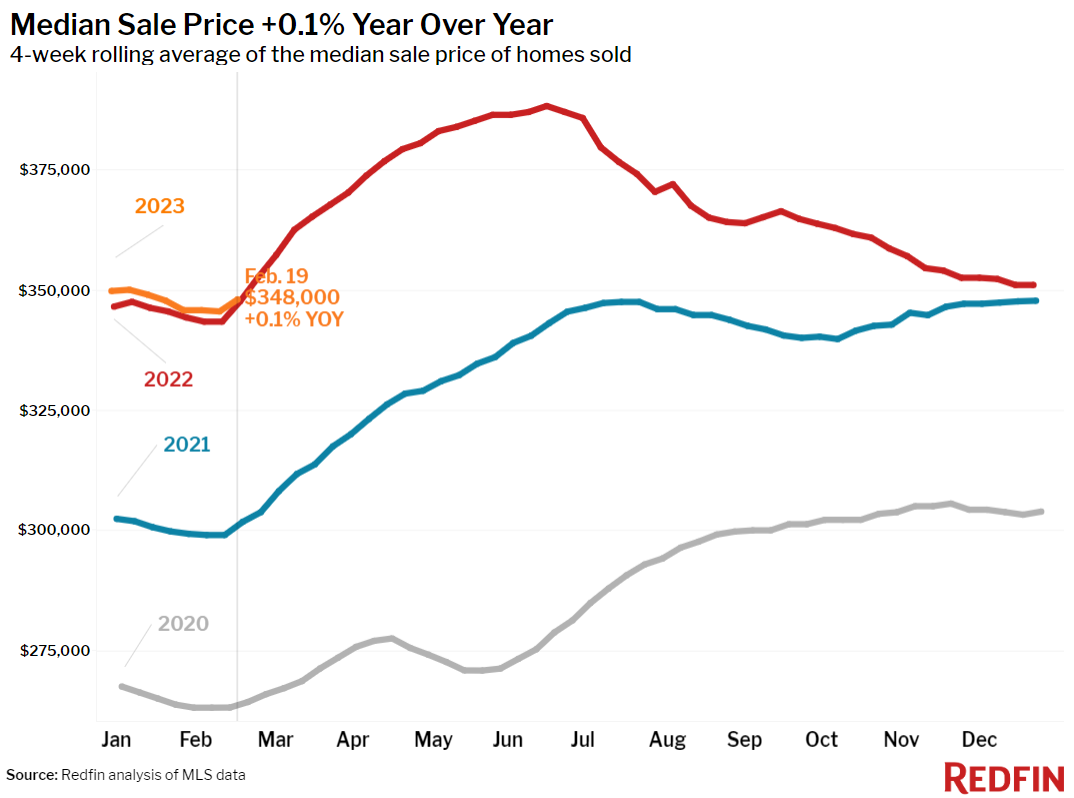
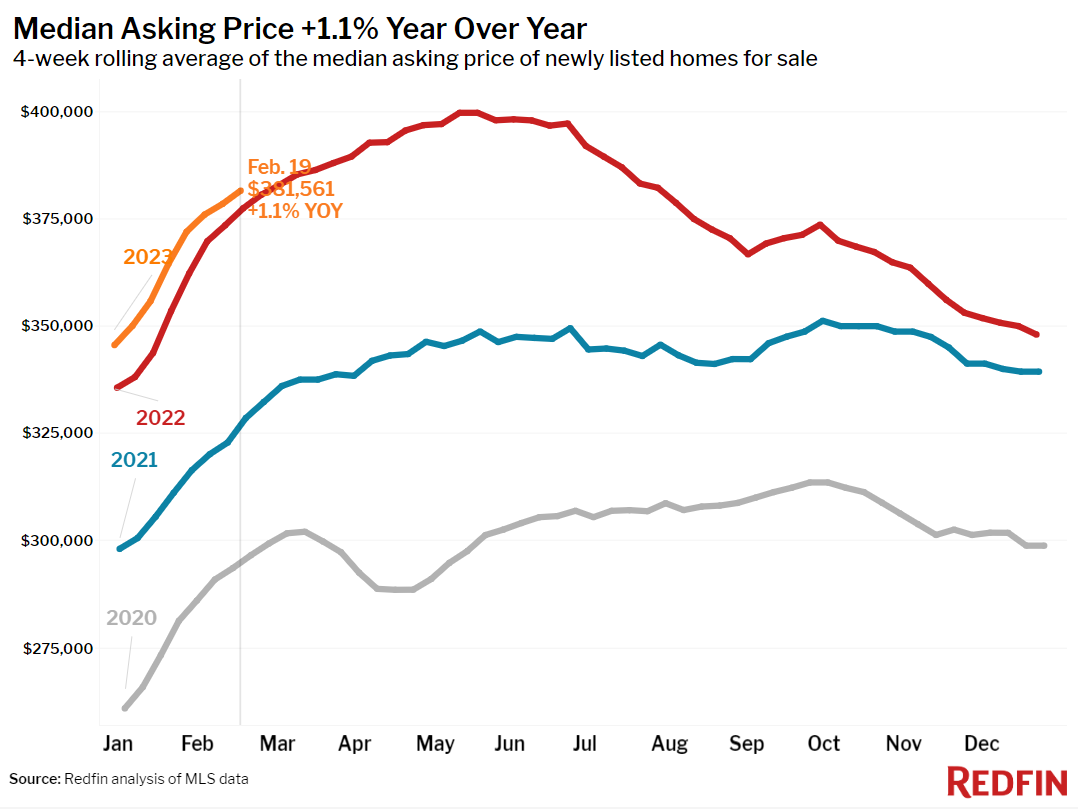
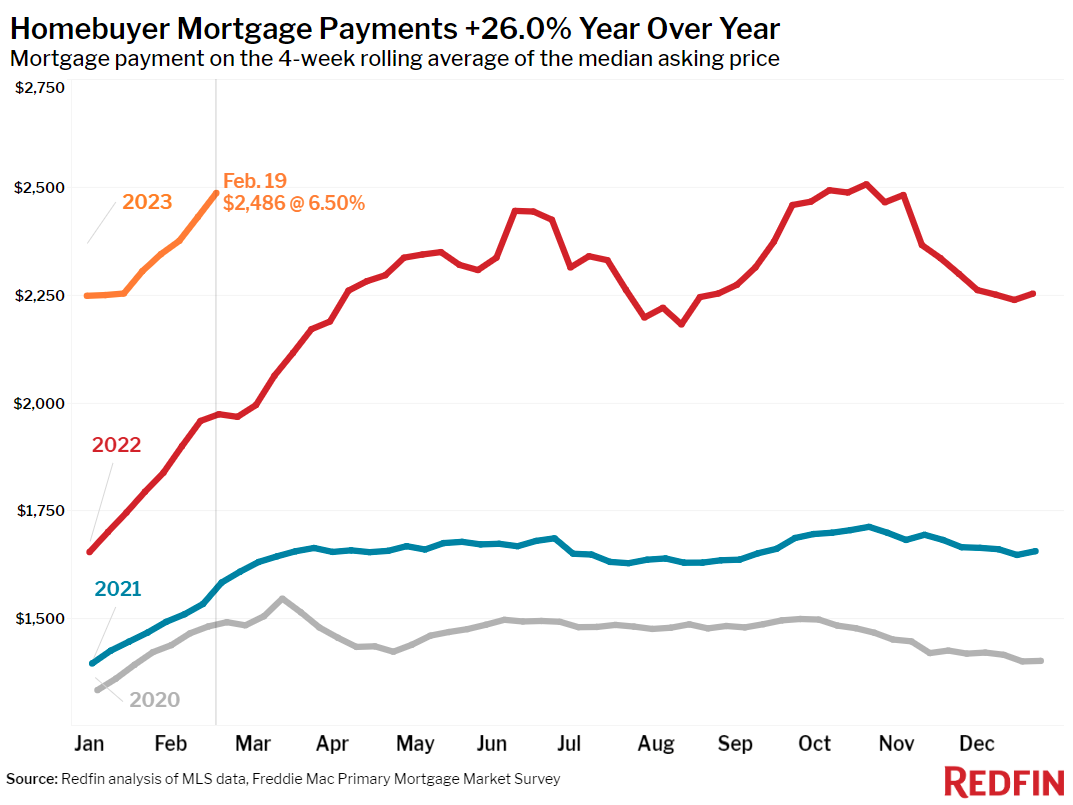
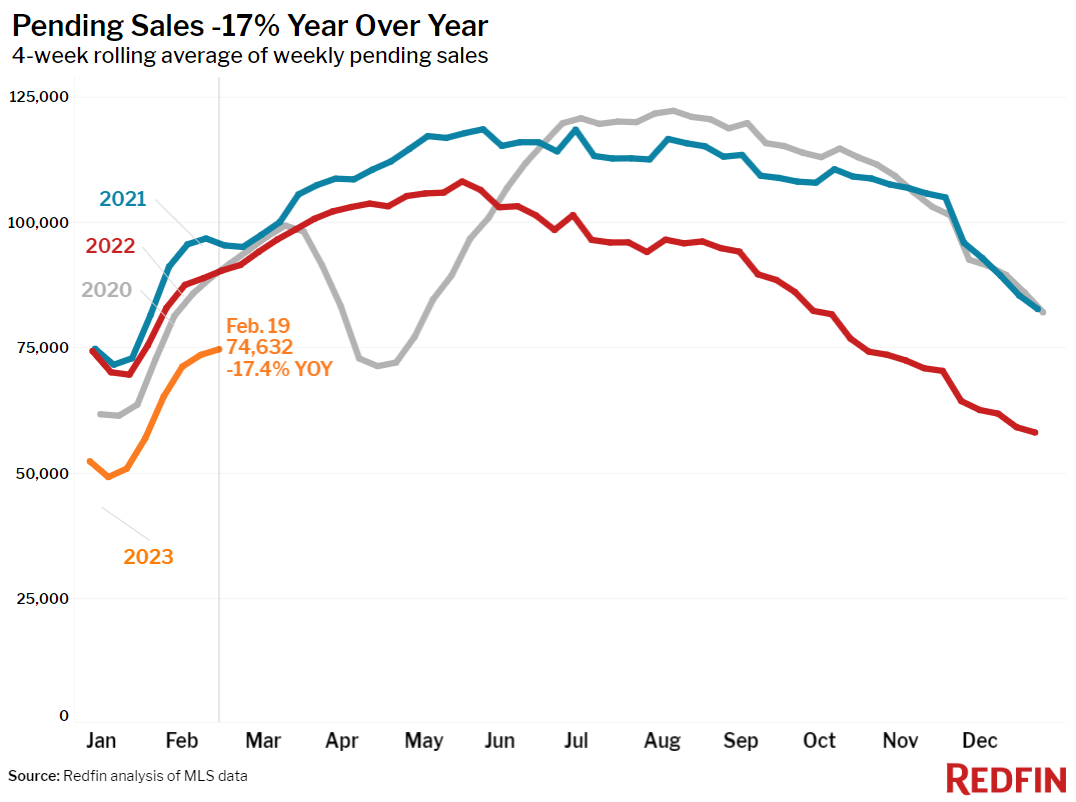
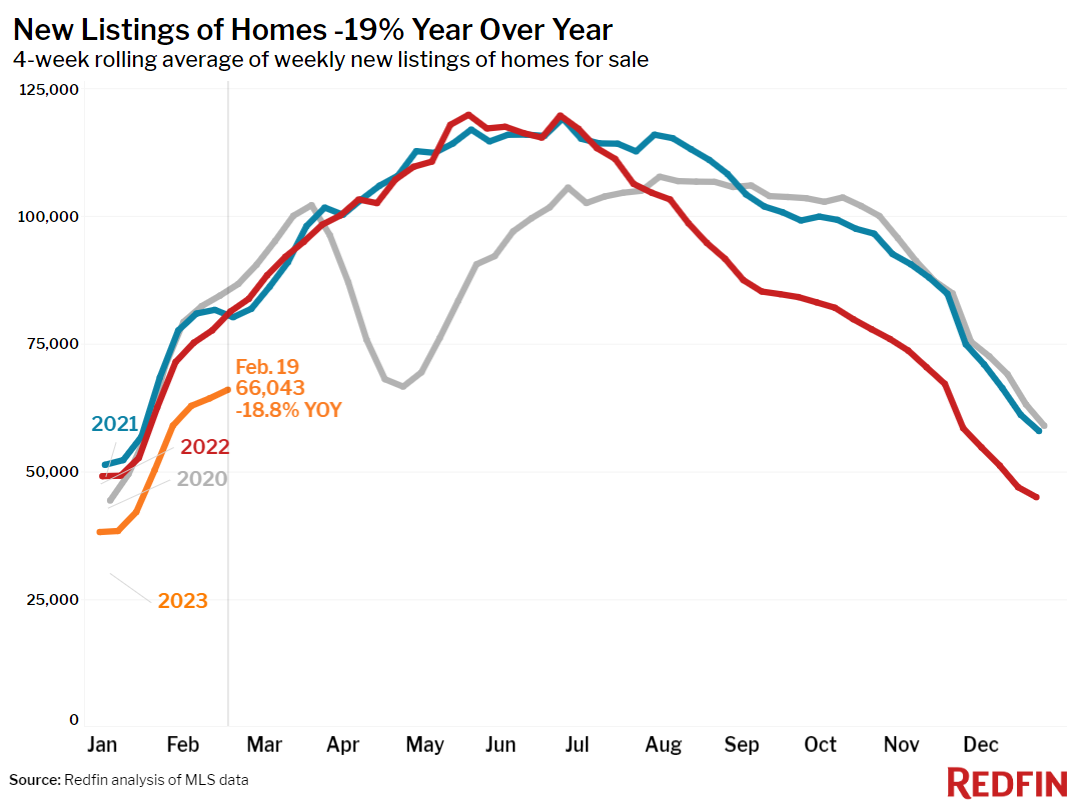
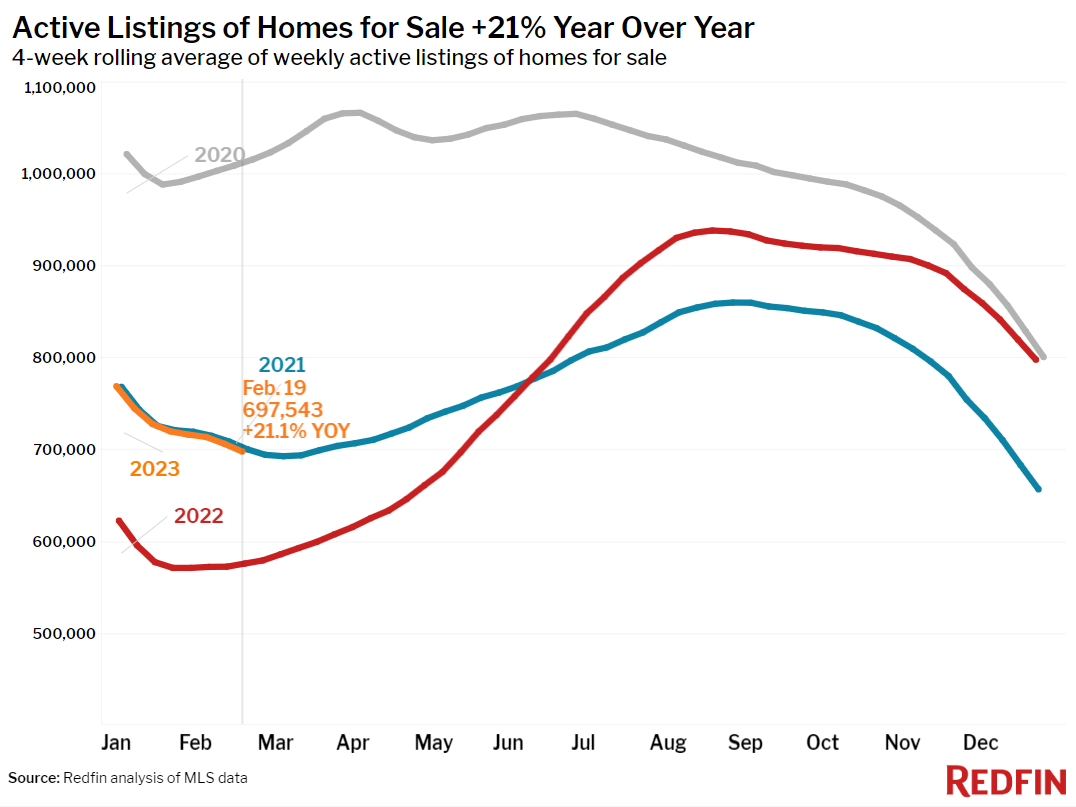
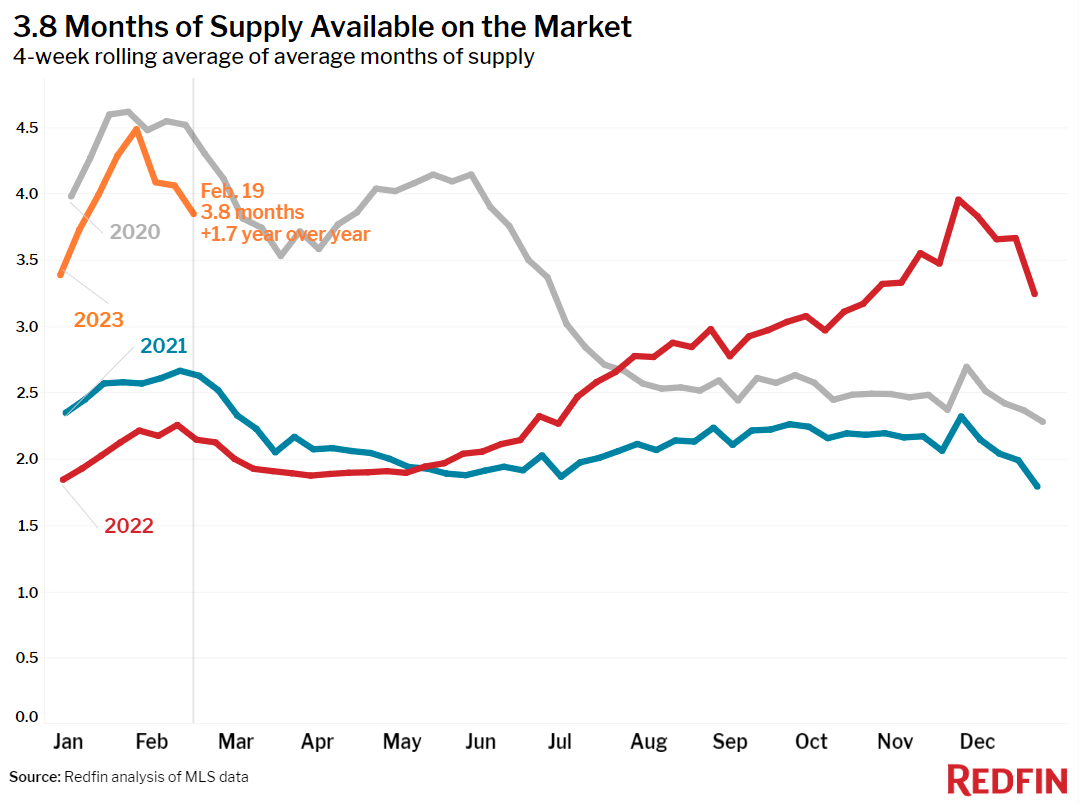
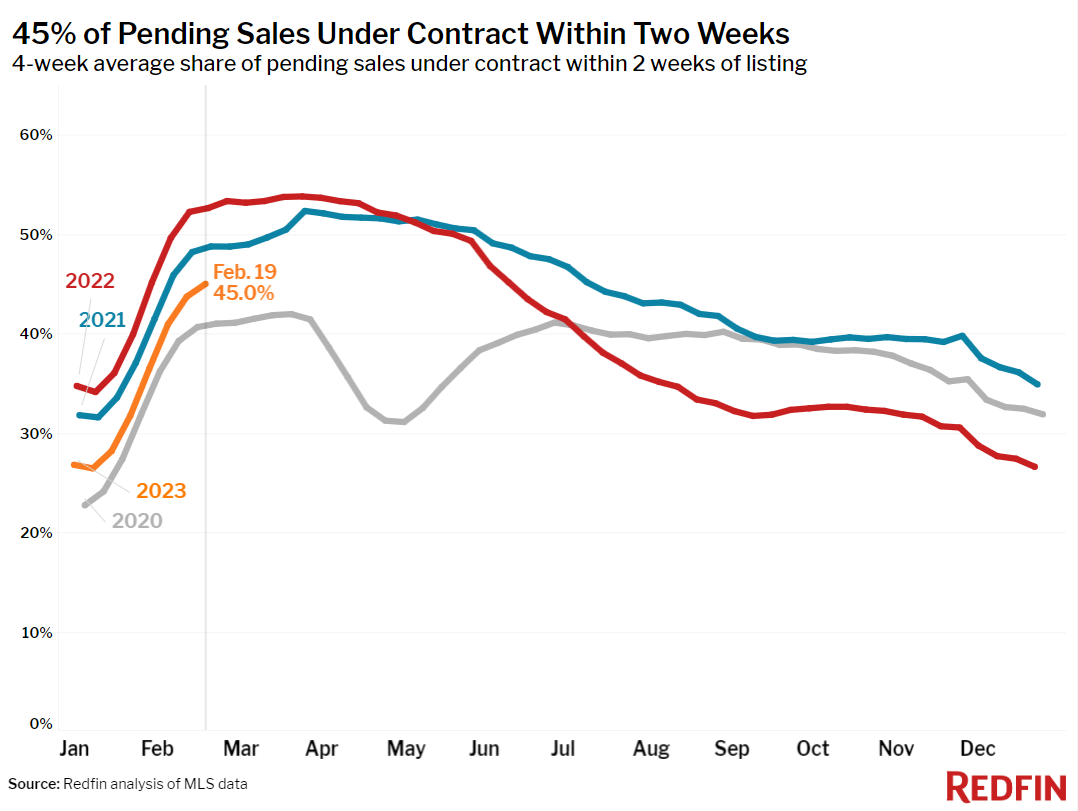
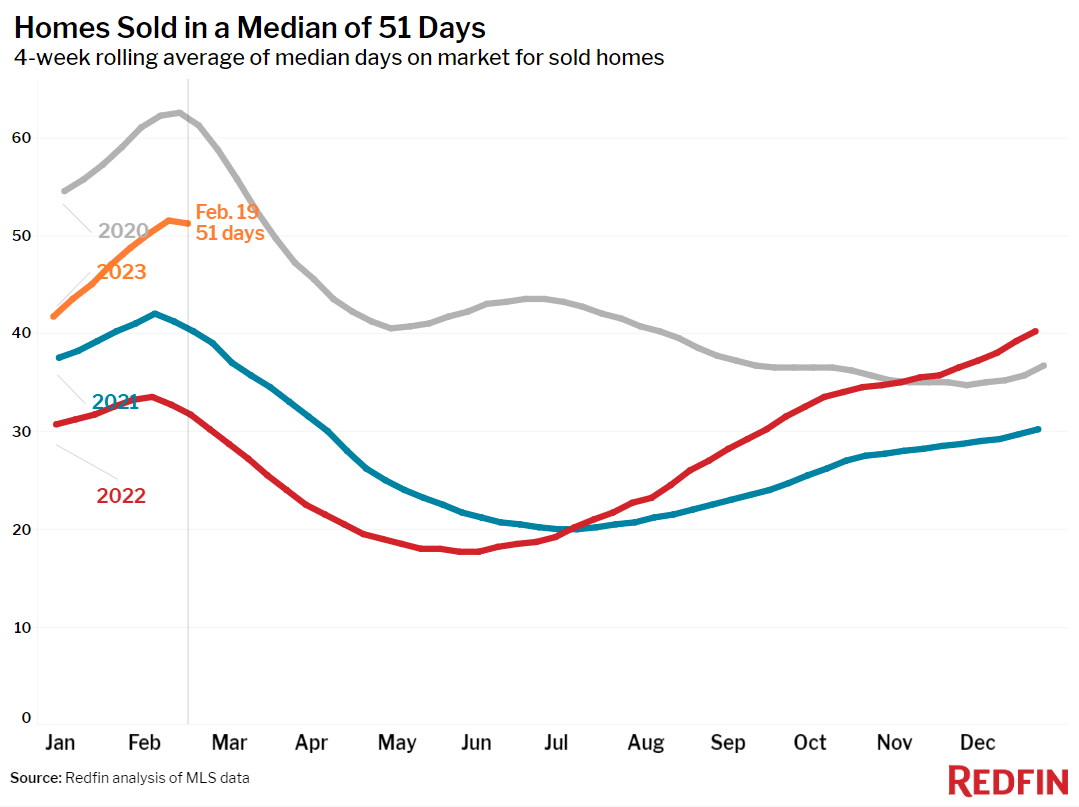
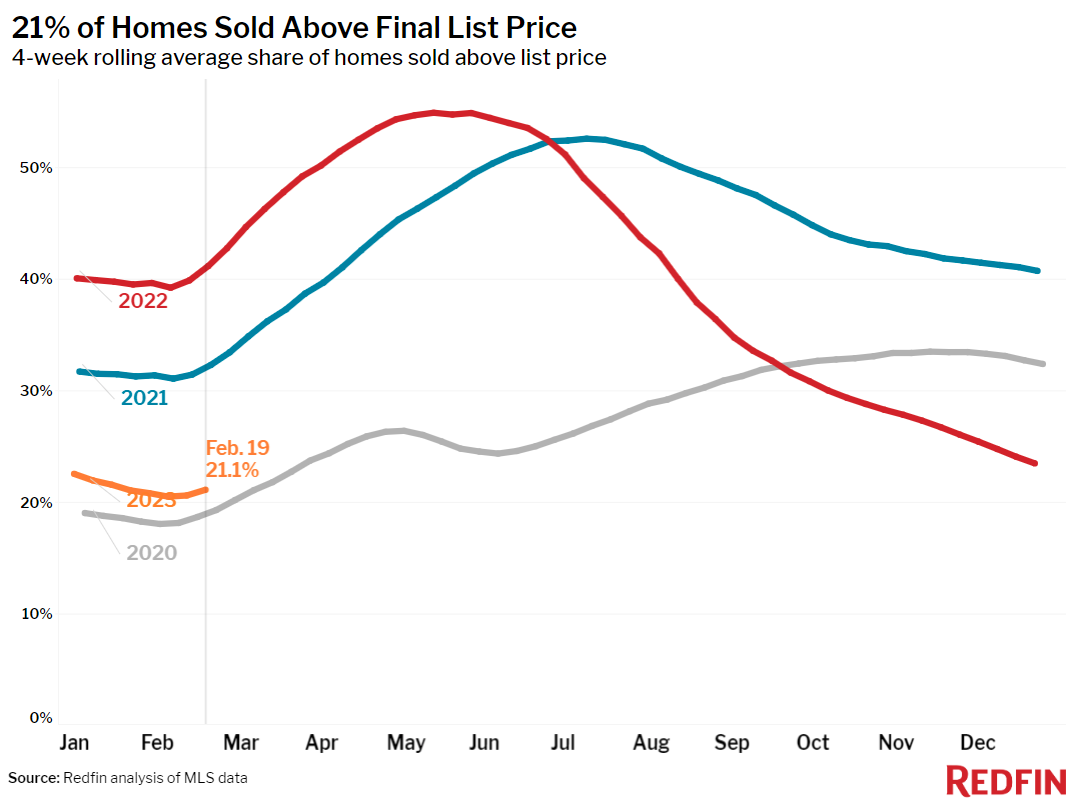
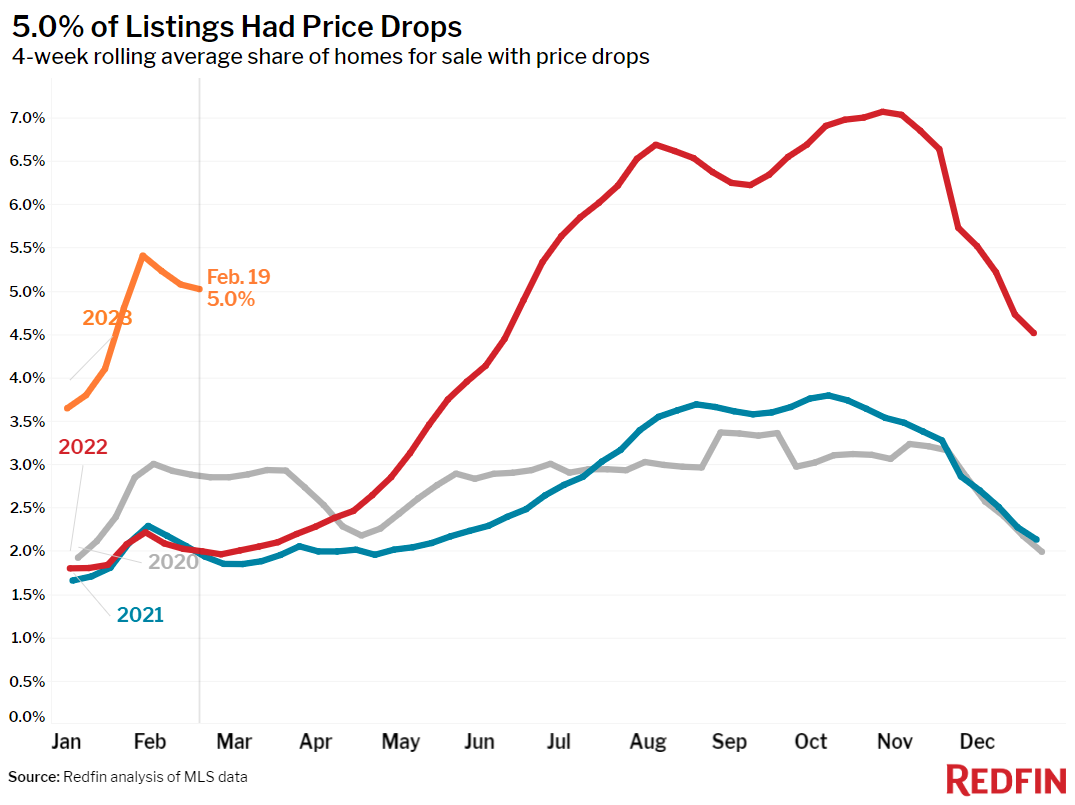
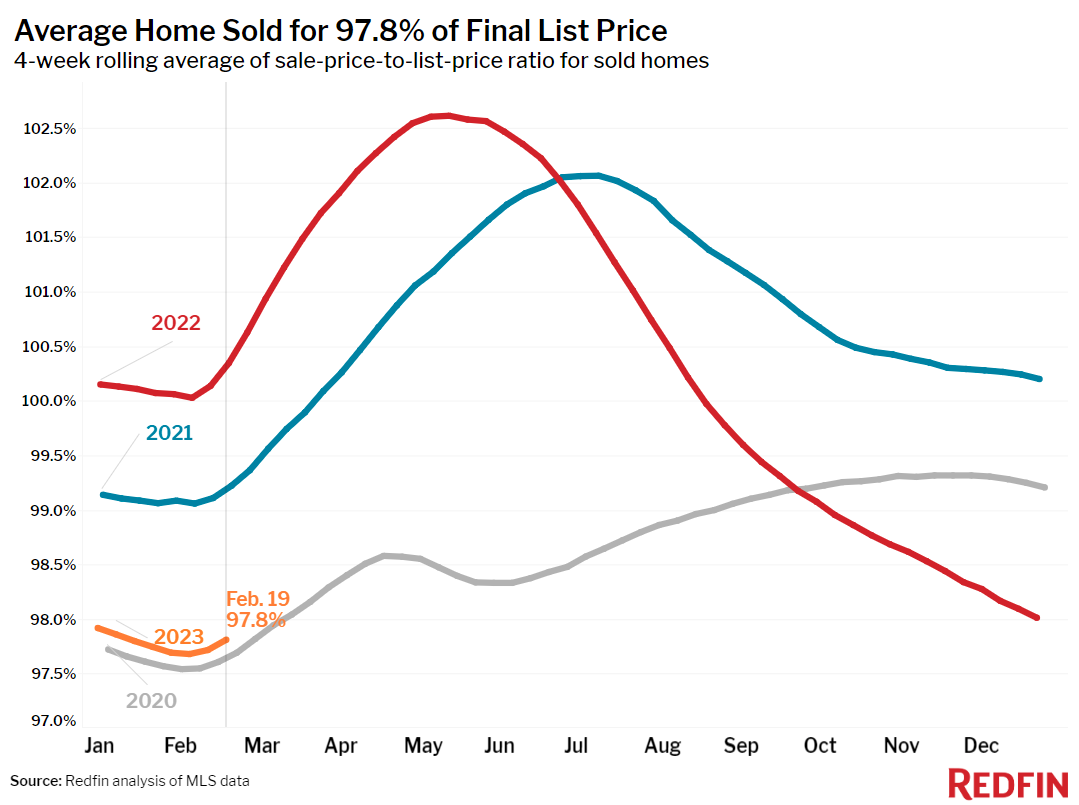


 United States
United States Canada
Canada